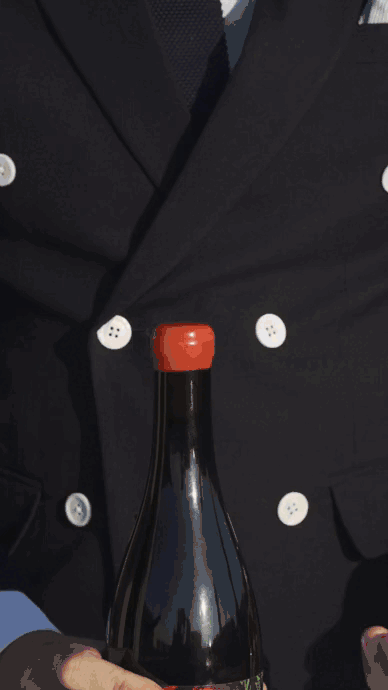The concept of wax-sealed wine has already appeared 6000 years ago. At that time, Sumerians used clay to seal wine bottles and stamped them. By 100 BC, Romans were able to bottle wine by using plaster. Gradually, the simpler fire wax has become the preferred choice for sealing wine.

Wax was used in sealing wine in the 17th & 18th centuries
Nowadays, there are still some wineries that insist on sealing bottles with wax. Why is that? How to open them? Is it always a guarantee of quality?
Wax-sealed bottles vs. aluminum foil

In the past, the main purpose of using wax-sealed bottles was to isolate wine from the air, thus eliminating the risk of oxidation. Also, it helped to extend the aging time and to remain the fresh flavor of wine.

Wax-sealed wine has become rarer but in recent years, but we have seen a come-back. The current wax sealing method is primarily aimed at high-quality wine with strong aging potential, or wine that demands to preserve in years.

Domaine Leroy, one of Burgundy’s finest, often uses wax to seal wine
More than 80% of the wines on the market are sealed with an aluminum foil. It gives pretty stable preservation results and is also cheaper, perfectly suitable for table wines.

A smaller proportion of the wines on the market use pure tin for their capsules. These are reserved to the most prestigious wines, also with long aging potential.
How to open a wax-sealed bottle?

All you need is a corkscrew knife. Rub the bottleneck with the palm of your hand to heat it up. Then put the corkscrew in the middle of the top and insert it into the wax, then swirl the screw.

Pull out the cork and remove the extra wax around the bottleneck. Use a napkin to wipe the bottleneck in order to keep it clean.

This approach is suitable for bottles with soft wax. As for the harder wax-sealed bottles or older wines, you may have to remove the wax around the bottleneck first.
Is wax-sealed wine always good wine?

Many consumers will assume that any wax-sealed wine equals to good wine, but it’s not the truth. Some wax-sealed bottles do represent wine with high quality while others simply use it to mislead the consumer.

Wax can have a variety of colors
This might be an attempt to show the traditional and vintage style of wine or it could be used as marketing means to attract more customers. Indeed, a number of cheap wines labeled VCE (Vin de la Communauté Européenne) or fake wines found on the domestic market use wax seal to pretend they are of great quality.

Low quality wines may also be sealed with wax
Whether the wine bottle is sealed by wax or not can not be the key to measure the quality of wine.

How much is too much?
A good bottle of wax-sealed wine is the salute and retrospect of traditional handicraft. But always be careful when shopping, and don't get fooled by marketing lures!

Founded in 2018 by Matthieu Ventelon, Hedonia is the first institution in China combining professional Wine and Etiquette expertise in the same training offer.